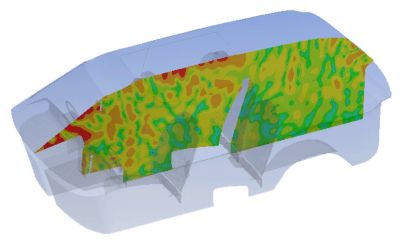-
-
Kostenlose Software für Studierende
Ansys unterstützt die nächste Generation von Ingenieur*innen
Studenten erhalten kostenlosen Zugang zu erstklassiger Simulationssoftware.
-
Verbinden Sie sich jetzt mit Ansys!
Gestalten Sie Ihre Zukunft
Stellen Sie eine Verbindung mit Ansys her, um zu erfahren, wie Simulation Ihren nächsten Durchbruch vorantreiben kann.
Länder und Regionen
Kostenlose Demoversionen
Produkte & Dienstleistungen
Lernportal
Über das Unternehmen
Back
Produkte & Dienstleistungen
Back
Lernportal
Ansys unterstützt die nächste Generation von Ingenieur*innen
Studenten erhalten kostenlosen Zugang zu erstklassiger Simulationssoftware.
Back
Über das Unternehmen
Gestalten Sie Ihre Zukunft
Stellen Sie eine Verbindung mit Ansys her, um zu erfahren, wie Simulation Ihren nächsten Durchbruch vorantreiben kann.
Kostenlose Demoversionen
ANSYS BLOG
May 25, 2018
Multiphysics Simulation Reduces Automotive Noise
You are having a discussion with your passenger while driving and you raise your voice to be heard as the car goes faster. Or, you pull onto the on-ramp of the highway and instinctively turn up the volume on the car stereo (that is, if you don’t have a car stereo that’s programmed to increase the volume as your speed increases to overcome the ambient noise). So, you may not be surprised to learn that J.D. Power lists high levels of automotive noise as one of the most commonly reported problems. To tackle this challenge and design quieter rides, engineers at Corning use Ansys multiphysics simulation software.
There are several causes of automotive noise. When wind hits exterior surfaces, noise is transmitted via the automobile’s components to the inside of the cabin. This is known as flanking noise and is the primary cause of automotive noise at highway speeds. Turbulent air flowing around the vehicle causes the windshield and windows to vibrate, and the tires contacting the road and other mechanical noises related to the automobile’s operation (e.g., the engine) also contribute to the overall noisiness of an automobile.

Quieting the Ride
Corning’s engineers wanted to determine which glass surfaces caused the least automotive noise and if lightweight glass would make a difference. They used Ansys software for aerodynamics and vibro-acoustics simulation to analyze the effects of sound transmission through the glass on the front portion of the car at 30, 60 and 80 mph. Using multiphysics simulation, they virtually modified the designs of the front windshield and front side windows, as well as the type of glass, and succeeded in lowering the level of noise. Based on this process, Corning’s engineers hope to increase their design and testing efficiency by 30 to 50 percent.

Decreasing automotive noise is essential for increasing customer satisfaction and safety. Corning is using Ansys multiphysics technology to improve its design process in a cost-effective manner resulting in a competitive edge and shorter time to market for its improved designs..

Learn more in the article A Window into Automotive Noise in the latest issue of Ansys Advantage magazine.